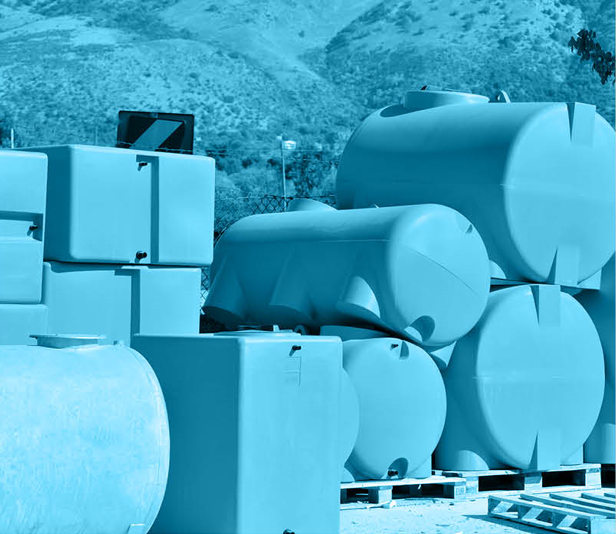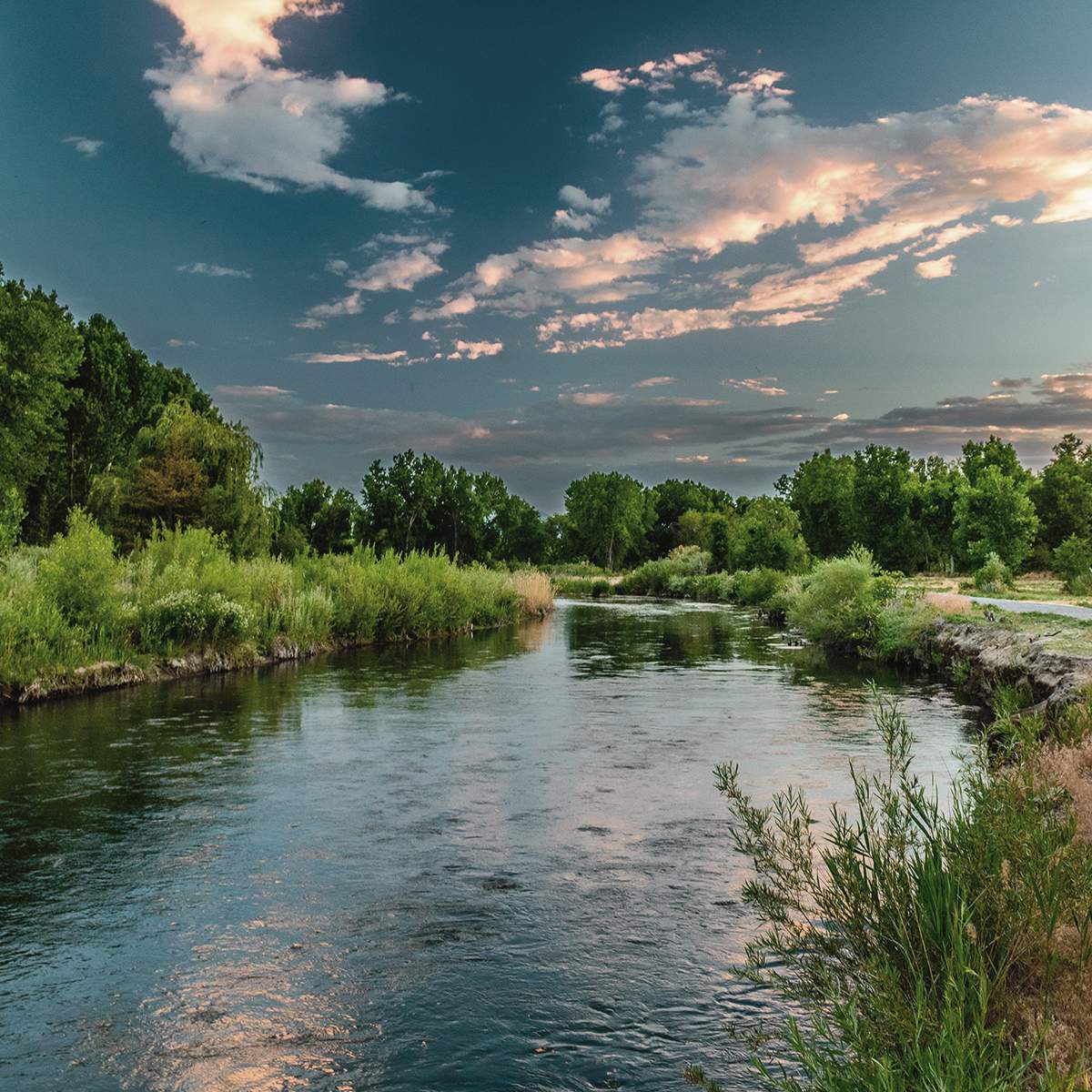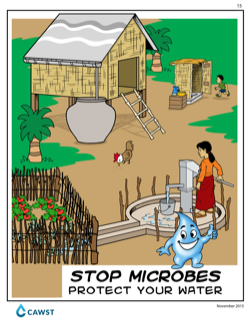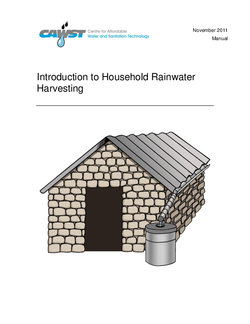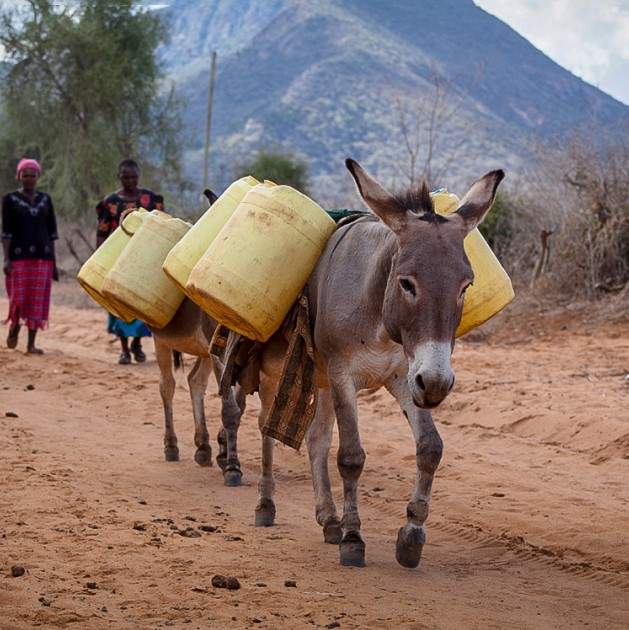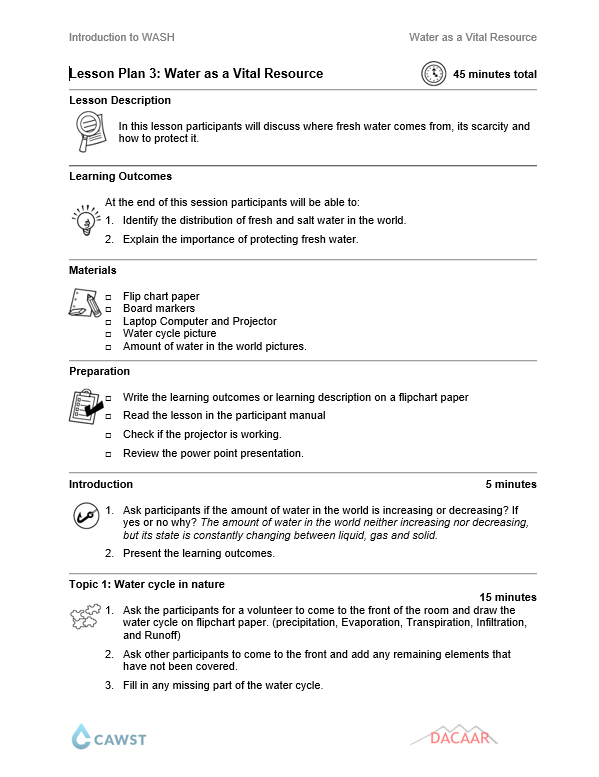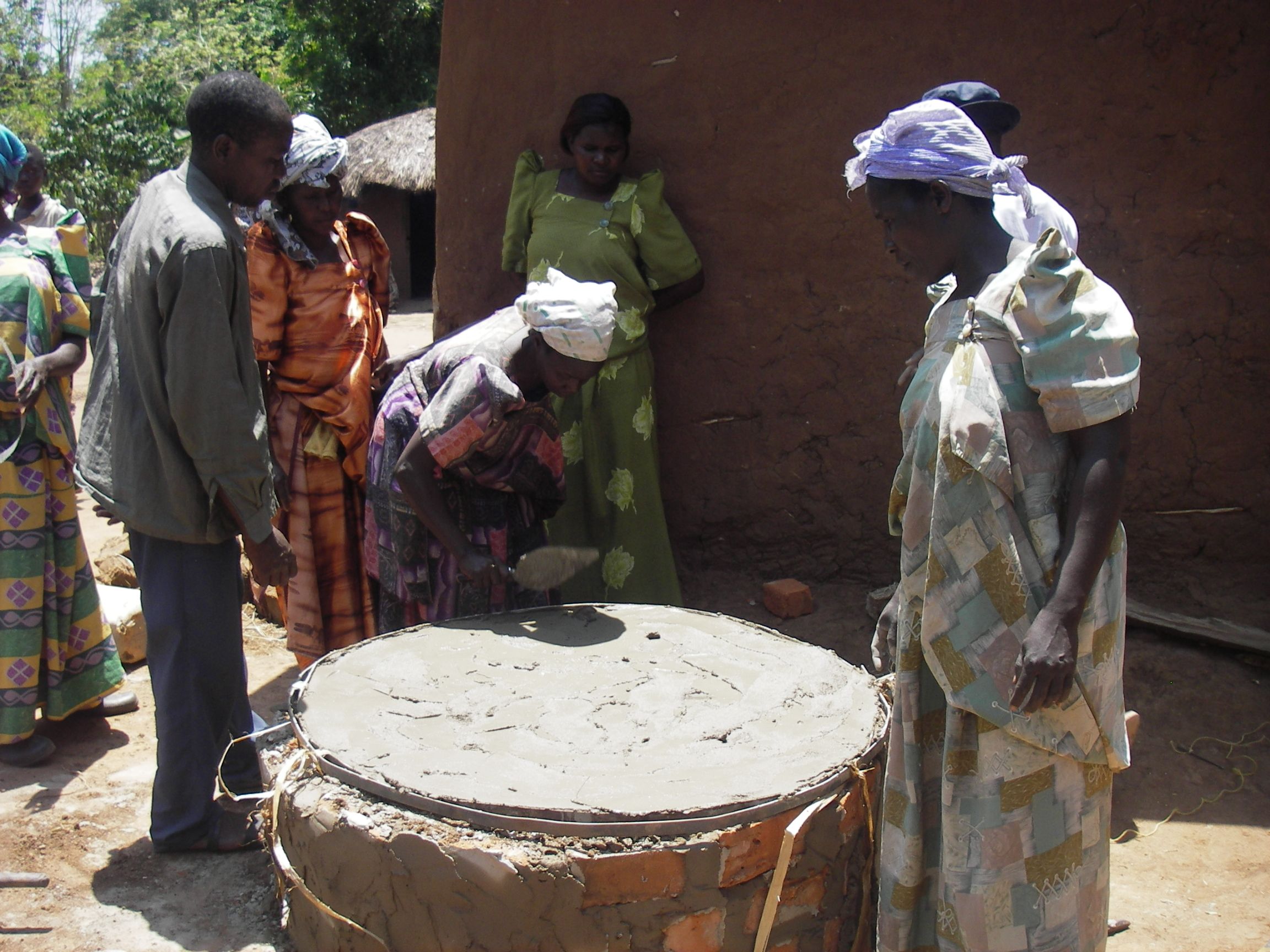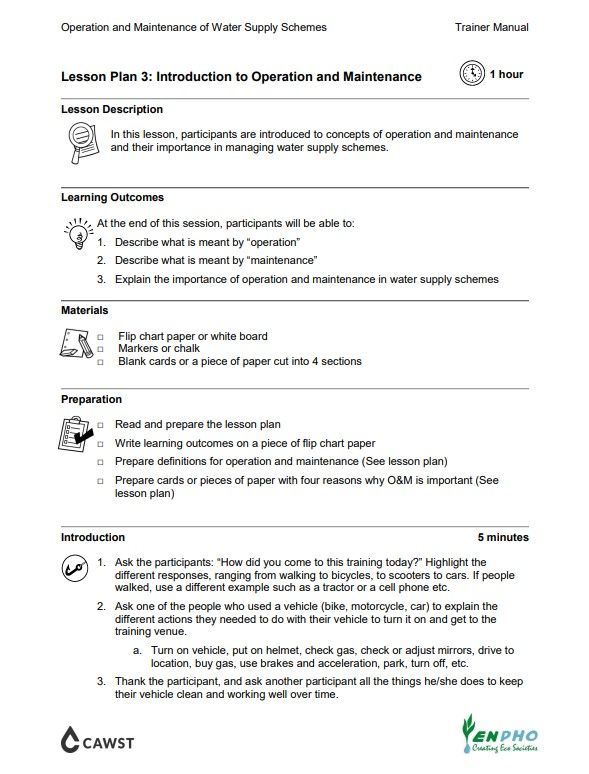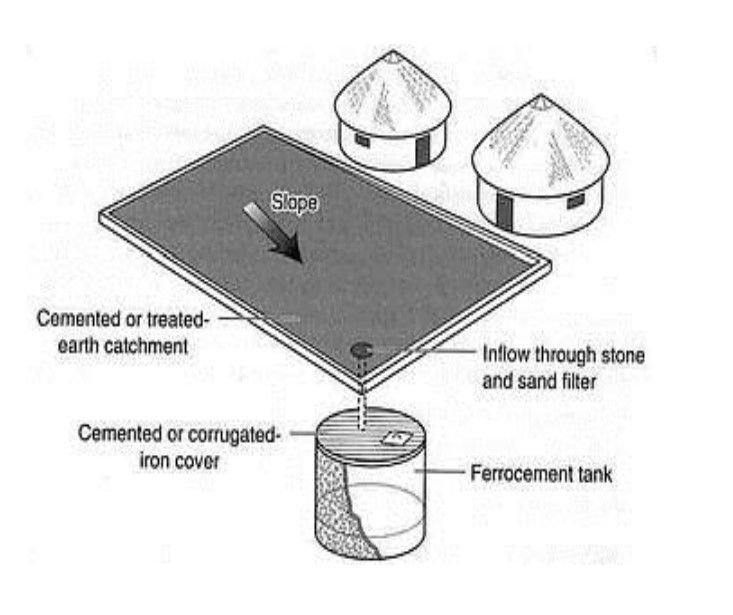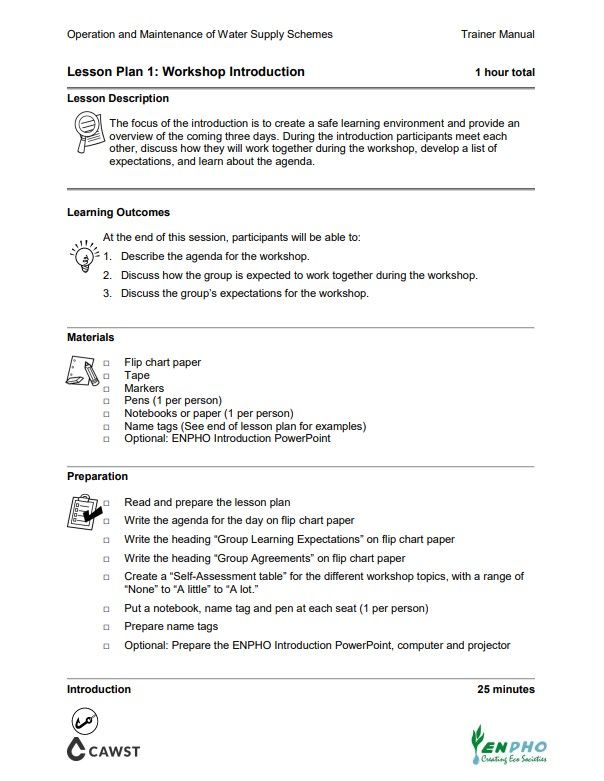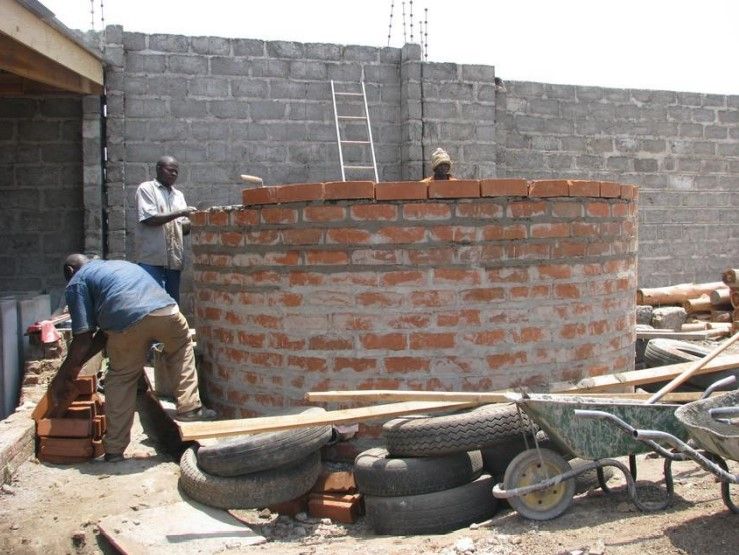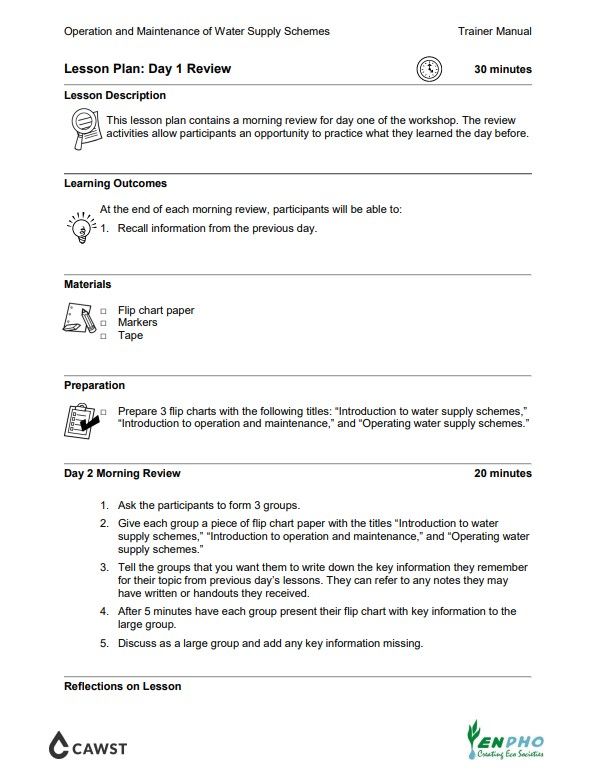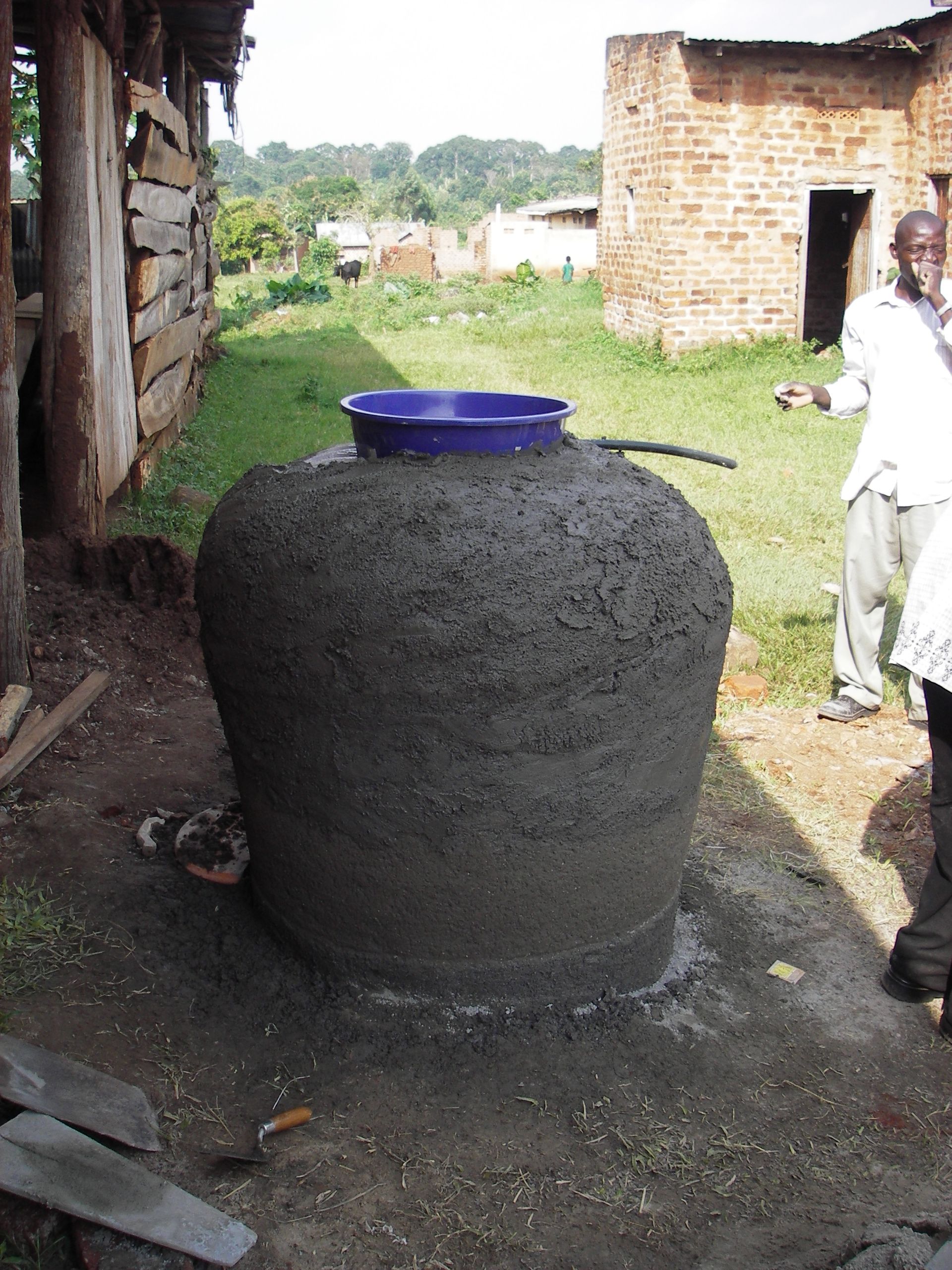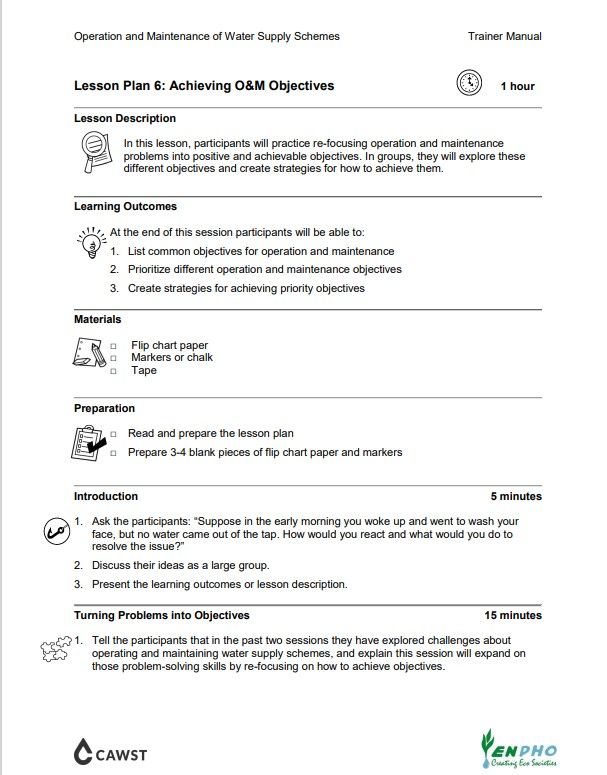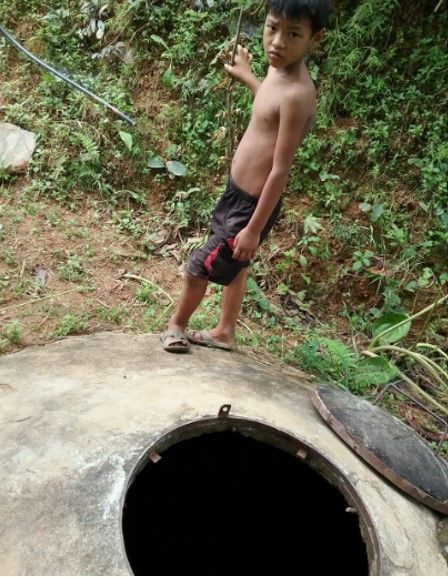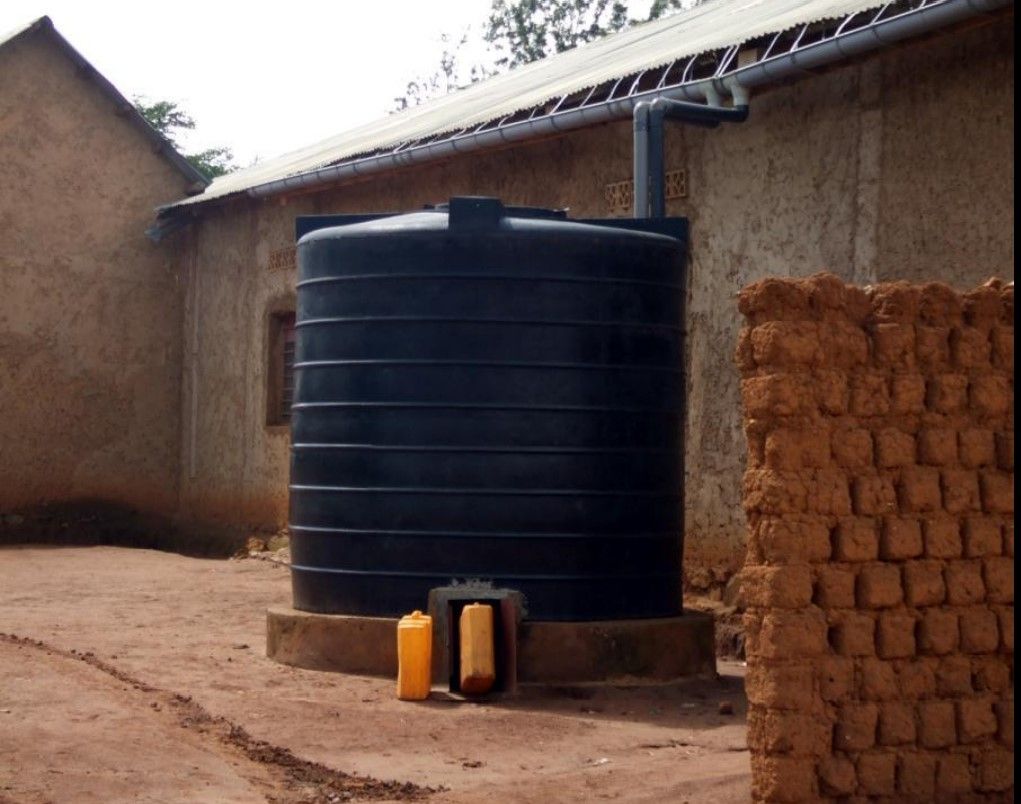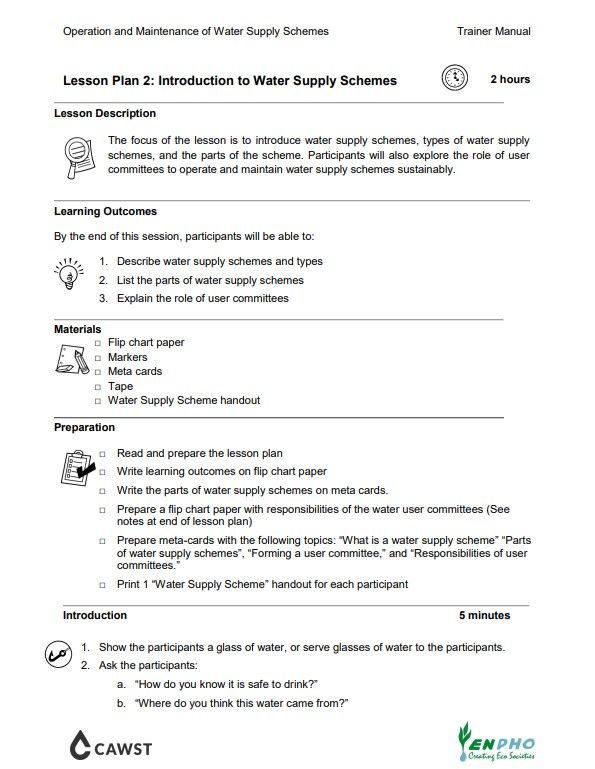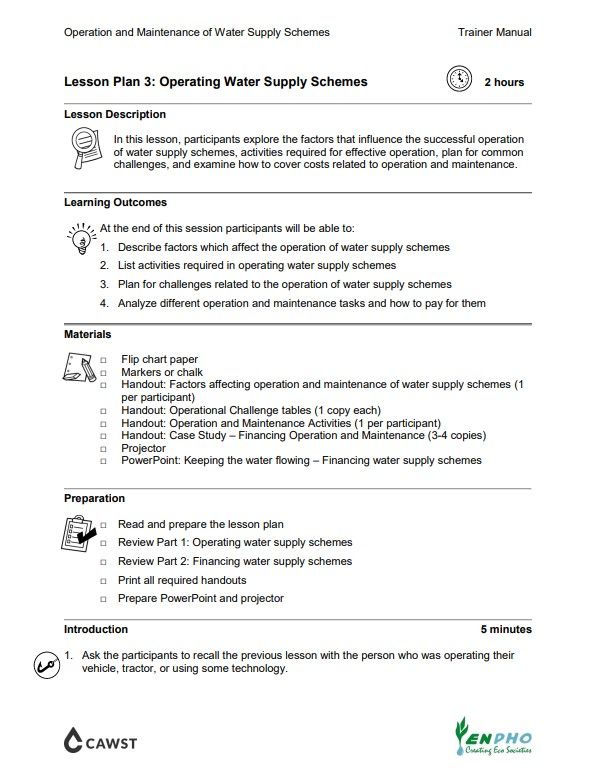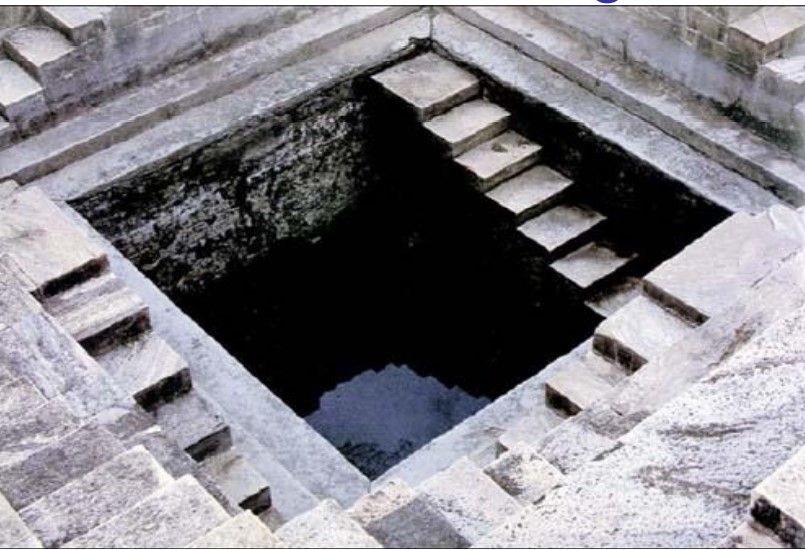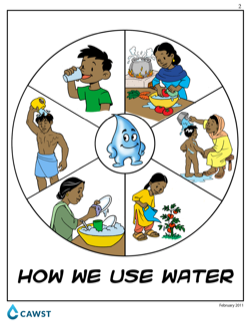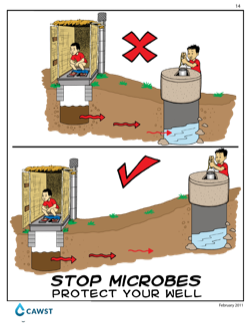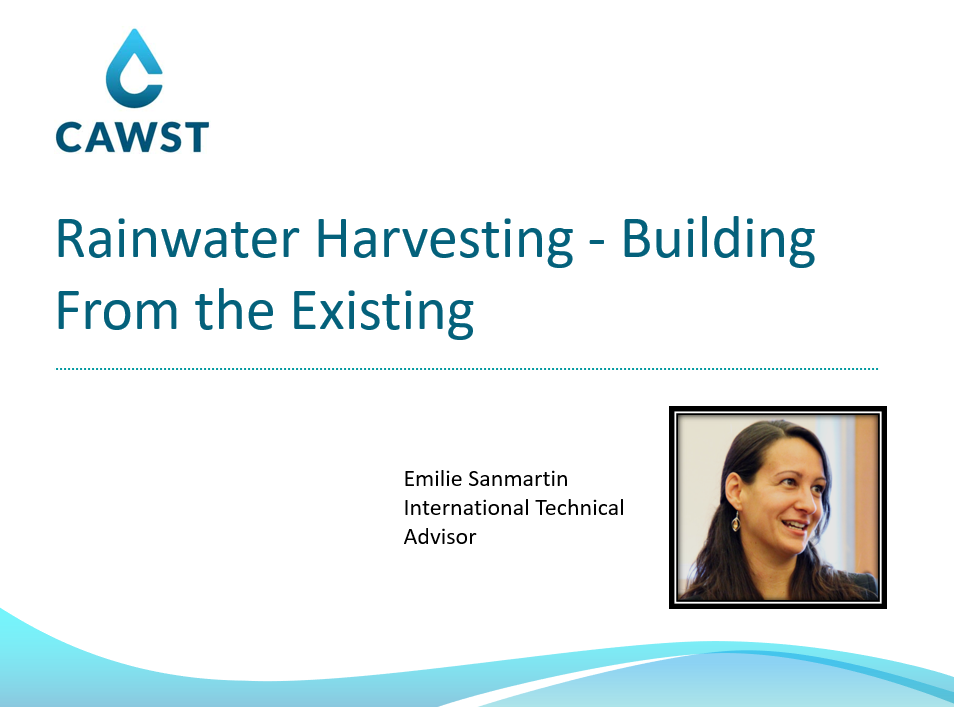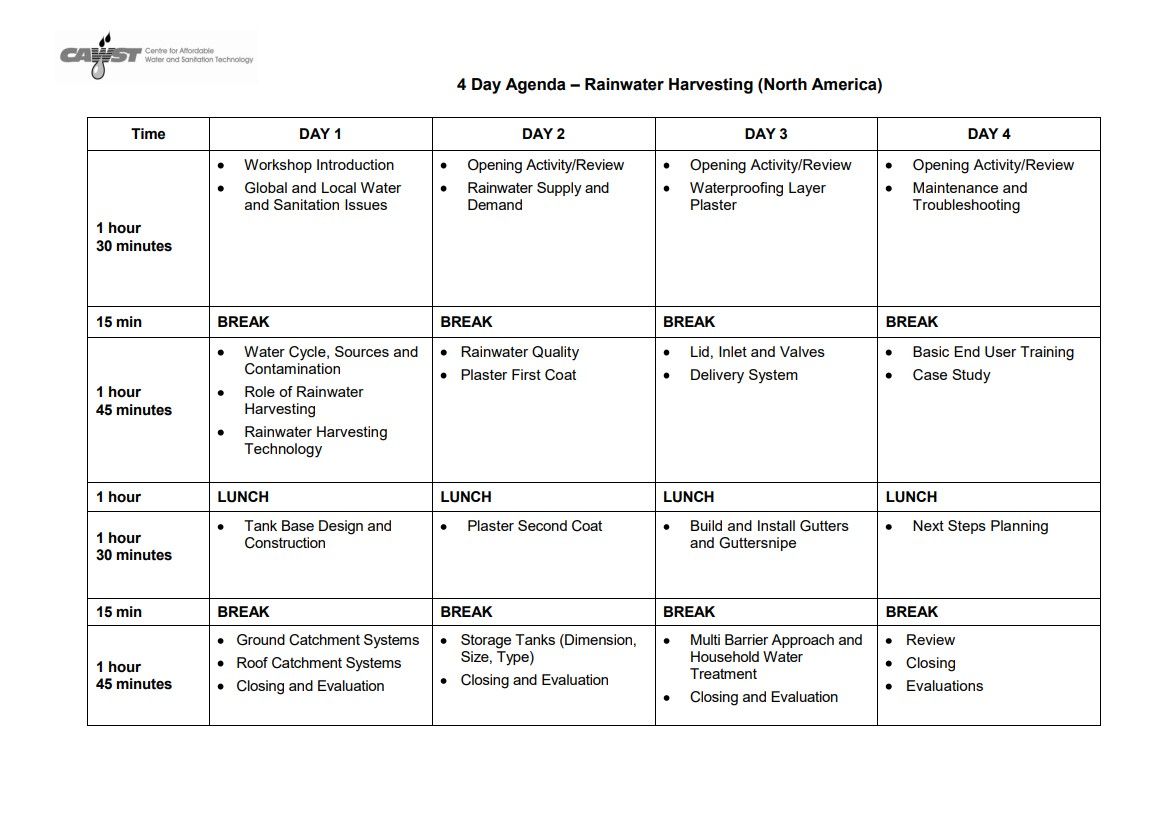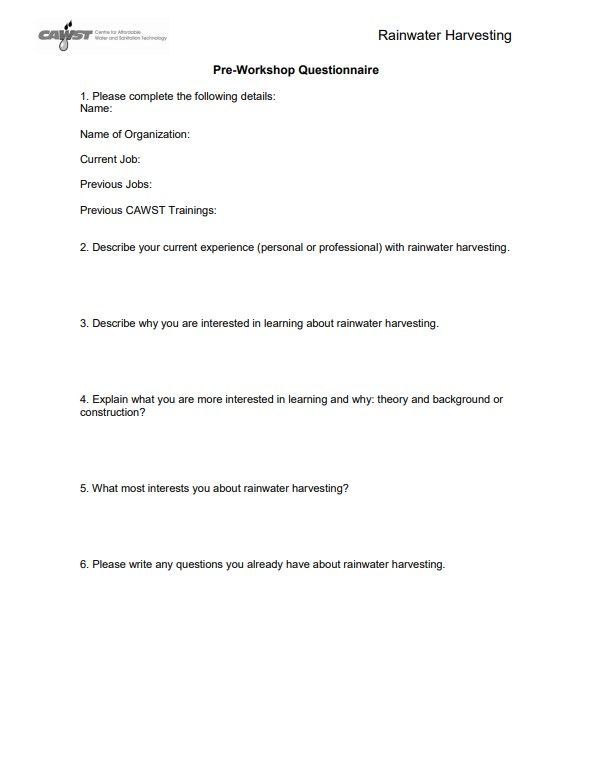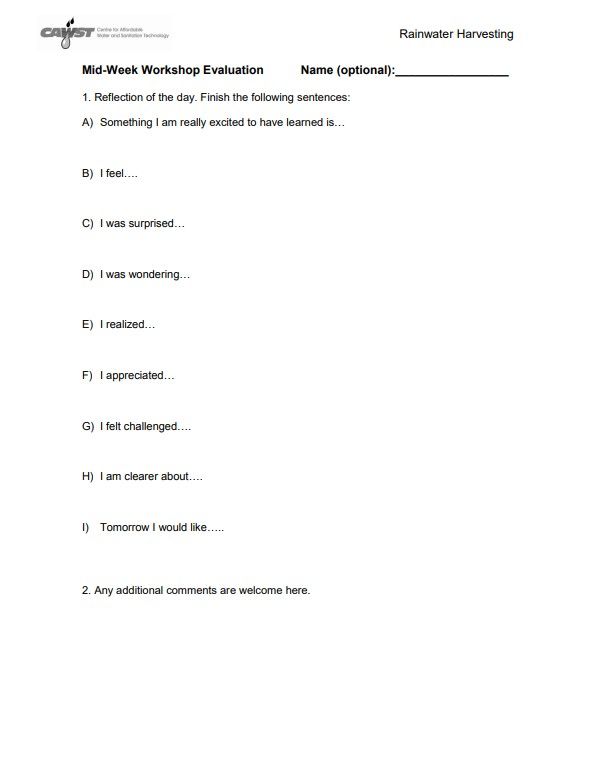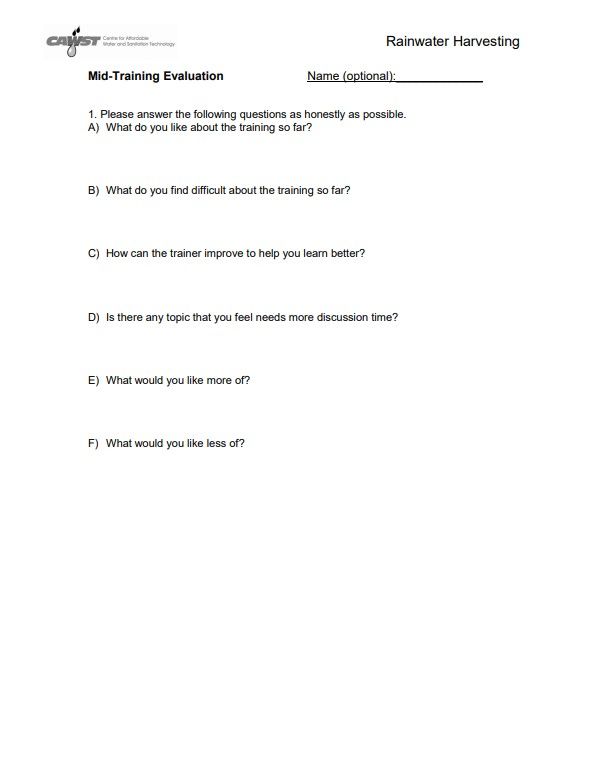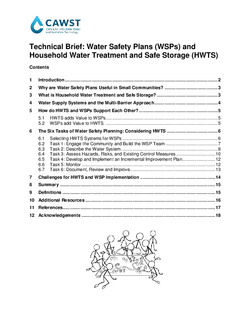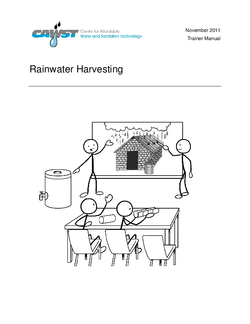Explorar Suministro de agua
Calculadora de dosis de cloro: cloración de "choque" de pozos
Esta calculadora le permite determinar la cantidad del producto de cloro necesaria para preparar una solución al 1% y la cantidad de solución al 1% necesaria para desinfectar pozos cavados a mano y pozos perforados.
Idiomas
inglés
francés
español
árabe
portugués
Calculadora de dosis de cloro: cloración de "choque" de tanques
Esta calculadora le permite determinar la cantidad de cloro necesaria para desinfectar con cloración de "choque" tanques de almacenamiento y tanques de camiones cisterna. Se recomienda este método si los tanques son nuevos o hay pruebas de contaminación microbiológica.
Idiomas
inglés
español
francés
árabe
portugués
Protección de la fuente de agua
"¿Qué cuestiones influyen en la calidad de las fuentes de agua? ¿Cómo puede identificar usted cuál es la mejor fuente de agua posible para su familia o para las familias que se benefician con su programa? Conviértase en detective de WASH para encontrar las fuentes clave de contaminación y cómo evitarlas."
Idiomas
inglés
francés
español
Proteja su agua
Existen formas de proteger el agua de la contaminación (protección de la cuenca y de la fuente de agua, pozo protegido, almacenamiento adecuado del agua de lluvia, buena eliminación de aguas residuales).
Idiomas
español
inglés
suajili
criollo haitiano
francés
guc
Conozca el tratamiento del agua a nivel domiciliario
"¿Se pregunta cómo puede proporcionar agua potable a hogares, escuelas y clínicas de su comunidad? El tratamiento del agua a nivel domiciliario y su almacenamiento seguro (TANDAS) es una solución simple y eficaz. ¡Vea aquí todos los conceptos básicos para comenzar!"
Idiomas
inglés
español
francés
árabe
hindi
Taller sobre el tratamiento del agua a nivel domiciliario y su almacenamiento seguro
This collection contains the resources for both trainers and participants for the Household Water Treatment and Safe Storage workshop. This two to three day workshop provides an introduction to drinking water quality, the Multi-Barrier Approach to safe drinking water, household water treatment and safe storage (HWTS) options, behaviour change, and implementation best practices. The intended participants are people responsible for making decisions about HWTS selection and implementation.
Idiomas
francés
español
inglés
árabe
hindi
Introducción a la captación de agua de lluvia - manual
Este manual es para implementadores de proyectos que están pensando en iniciar un proyectos de captación de agua de lluvia.
Idiomas
inglés
francés
español
Transporte seguro del agua
En este módulo interactivo, aprenderá a garantizar que no se contamine el agua al trasladarla desde la fuente hasta el punto de consumo.
Idiomas
inglés
francés
español
Plan de lección: El agua como un recurso vital (Introducción al WASH)
En esta lección, los participantes abordarán de dónde viene el agua dulce, su escasez y cómo protegerla.
Idiomas
inglés
Maintaining Water Supply Schemes - Lesson Plan (O&M Nepal)
In this lesson, participants learn about different types of maintenance and explore the activities necessary to maintain water supply schemes over time. Participants will also create a plan for maintenance activities.
Idiomas
inglés
O&M of Water Supply Schemes Nepal Participant List
This participant list template is a tool that will help you keep a database of participant information for your Operation & Maintenance of Water Supply Schemes in the context of Nepal workshop.
Idiomas
inglés
Presentación sobre la captación sobre techos (RAL)
Esta presentación describe sistemas de captación sobre techos y explica cómo calcular el coeficiente de escorrentía
Idiomas
inglés
Recolección de agua de lluvia - Evaluación final
Esta evaluación se distribuye al final del taller para proporcionar retroalimentación constructiva sobre el taller al capacitador
Idiomas
inglés
español
francés
Operating Water Supply Schemes - Presentation (O&M Nepal)
This presentation is used to support the Operating Water Supply Schemes Lesson Plan (O&M Nepal). It addresses financing operation and maintenance of water supply schemes.
Idiomas
inglés
O&M of Water Supply Schemes Nepal 3 Day Agenda for Participants
This is the basic 3-day agenda for participants attending the Operation & Maintenance of Water Supply Schemes in the context of Nepal workshop.
Idiomas
inglés
Practicing O&M Skills - Presentation (O&M Nepal)
This presentation is used to support the Practicing Operation & Maintenance Skills Lesson Plan (O&M Nepal). It covers using the ENPHO Water Testing Field Kit.
Idiomas
inglés
Intro to Operation & Maintenance - Lesson Plan (O&M Nepal)
In this lesson, participants are introduced to concepts of operation and maintenance and their importance in managing water supply schemes.
Idiomas
inglés
Presentación sobre la captación sobre el suelo (RAL)
Esta presentación muestra ejemplos de opciones de captación sobre el suelo
Idiomas
inglés
Workshop Introduction - Lesson Plan (O&M Nepal)
The focus of the introduction is to create a safe learning environment and provide an overview of the coming three days. During the introduction participants meet each other, discuss how they will work together during the workshop, develop a list of expectations, and learn about the agenda.
Idiomas
inglés
Presentación sobre el diseño de tanques (RAL)
Esta presentación muestra ejemplos de diseños de tanques
Idiomas
inglés
O&M of Water Supply Schemes Nepal Workshop Outline
This outline describes the content, objectives, and audience for the Operation & Maintenance of Water Supply Schemes in the context of Nepal workshop.
Idiomas
inglés
Day 1 Closing - Lesson Plan (O&M Nepal)
This lesson plan contains a review for day one of the workshop. The review activities allow participants an opportunity to practice what they learned during the day.
Idiomas
inglés
Operation & Maintenance of Water Supply Schemes Nepal Trainer Manual
This manual is for trainers who are interested in delivering training on Operation & Maintenance of Water Supply Schemes in the context of Nepal. It includes lesson plans, agendas, forms, and guidance on training delivery.
Idiomas
inglés
O&M of Water Supply Schemes Nepal Final Evaluation Summary
This is a template for displaying the final results of your participant evaluations for the Operation & Maintenance of Water Supply Schemes in the context of Nepal workshop.
Idiomas
inglés
Presentación sobre el rol de RAL (RAL)
Esta presentación describe los pros y contras de la recolección de agua de lluvia
Idiomas
inglés
Recolección de agua de lluvia - Resumen de las evaluaciones finales
Esta es una plantilla para presentar los resultados de las evaluaciones finales
Idiomas
inglés
Achieving O&M Objectives - Lesson Plan (O&M Nepal)
In this lesson, participants will practice re-focusing operation and maintenance problems into positive and achievable objectives. In groups, they will explore these different objectives and create strategies for how to achieve them.
Idiomas
inglés
Sustainability Planning - Presentation (O&M Nepal)
This presentation is used to support the Sustainability Planning Lesson Plan (O&M Nepal). It addresses planning for the sustainability of water supply schemes.
Idiomas
inglés
Practicing O&M Skills - Lesson Plan (O&M Nepal)
This lesson focuses on the introduction of tools and fittings for operation and maintenance activities of water supply schemes. It allows participants hands-on practice to make or adapt locally available HDP fittings and thread cutting of GI pipe.
Idiomas
inglés
Link to WASH - Lesson Plan (O&M Nepal)
The lesson plan focuses on the importance of WASH for community health, its link to the water supply scheme, and the role of the water supply user committee in advocating for better WASH practices. Participants will also understand disease transmission routes and the link between WASH practices.
Idiomas
inglés
Recolección de agua de lluvia - Agenda para un taller de 5 días
Esta agenda proporciona los detalles sobre cómo dirigir un taller de 5 días con el uso de los planes de lección y las presentaciones provistas, para un público proveniente de países en vías de desarrollo
Idiomas
inglés
francés
español
Presentación sobre sistemas de entrega (RAL)
Esta presentación muestra imágenes de opciones de recolección de agua de lluvia
Idiomas
inglés
Intro to Water Supply Schemes - Lesson Plan (O&M Nepal)
The focus of the lesson is to introduce water supply schemes, types of water supply schemes, and the parts of the scheme. Participants will also explore the role of user committees to operate and maintain water supply schemes sustainably.
Idiomas
inglés
Operating Water Supply Schemes - Lesson Plan (O&M Nepal)
In this lesson, participants explore the factors that influence the successful operation of water supply schemes, activities required for effective operation, plan for common challenges, and examine how to cover costs related to operation and maintenance.
Idiomas
inglés
Aprenda sobre el Tratamiento del agua en contextos de emergencia
Colección de herramientas cortas de aprendizaje virtual y guías prácticas para ayudar a los técnicos del agua a tratar, desinfectar y gestionar el agua de consumo de manera segura en el terreno.
Idiomas
inglés
francés
español
árabe
portugués
hindi
Presentación sobre tecnologías de recolección de agua de lluvia (RAL)
La presentación describe los dos métodos de recolección de agua e luvia y los componentes de cualquier sistema de recolección de agua de lluvia
Idiomas
inglés
Maintaining Water Supply Schemes - Presentation (O&M Nepal)
This presentation is used to support the Maintaining Water Supply Schemes Lesson Plan (O&M Nepal). It addresses identifying maintenance issues with water supply schemes.
Idiomas
inglés
Sustainability Planning - Lesson Plan (O&M Nepal)
In this lesson, participants will use the skills and knowledge they have gained throughout the workshop to examine issues of sustainability and conduct an analysis of their current management of the water supply scheme. They will identify strengths and areas to improve, and highlight priority areas for improvement.
Idiomas
inglés
Taller sobre la captación agua de lluvia
Esta recopilación contiene recursos tanto para capacitadores como para participantes para el taller sobre captación de agua de lluvia. Este taller de cuatro/cinco días está diseñado para organizaciones y personas interesadas en comenzar un programa de captación de agua de lluvia. El taller brinda instrucción sobre el concepto y la tecnología de la captación de agua de lluvia para uso doméstico y cómo se encaja en la visión global de un suministro apropiado en países en desarrollo, tanto en medio rural como urbano. Los temas que se abordan incluyen el suministro y la demanda del agua, selección de una tecnología apropiada para la captación de agua de lluvia, y la construcción, instalación, operación y mantenimiento básicos de sistemas de captación en el suelo y en tejados.
Idiomas
inglés
francés
español
O&M of Water Supply Schemes Nepal (O&M Nepal) Workshop
These workshop materials contain the resources for the Operation & Maintenance of Water Supply Schemes in the context of Nepal workshop. This workshop has been designed to address common issues of performance, efficiency, and sustainability of rural water supply services, and incorporates technical and managerial sessions to support and provide guidance for local authorities.
Idiomas
inglés
Introduction to WASH
This is an introductory level workshop that was co-developed with our partners in Afghanistan at DACAAR. This workshop is for those who are just starting to work in the Water, Sanitation, and Hygiene sector. It covers the basic of WASH which include topics of disease transmission, household water treatment, solid waste management, vector control, sanitation, hygiene, and behaviour change.
Idiomas
inglés
Cómo usamos el agua
El agua de buena calidad es importante para muchos usos en nuestra vida (beber, cocinar, lavar los platos, cultivar plantas, lavar la ropa, bañarse).
Idiomas
inglés
suajili
español
francés
criollo haitiano
Proteja su pozo
Mantenga su pozo seguro al colocar la letrina cuesta abajo y lejos de su pozo.
Idiomas
inglés
español
criollo haitiano
francés
suajili
Rainwater Harvesting - Building From the Existing
Explores different ways to access the existing potentials to start or re-start a RWH project
Idiomas
inglés
Handpump Repair Zambia Trainer Manual
This trainer’s manual is to support people who facilitate the Hand Pump Repair workshop. It provides background on how and why the workshop was developed, tips that help you plan for a successful workshop, and several tools to help deliver your training, such as checklists, lesson plans and participant activities.
Idiomas
inglés
Water for Life: Improving Access to Drinking Water on Pacific Islands
On the Pacific Islands, fresh water is scarce. Rainwater is a main water source of drinking water and other critical needs. This session will address how reliable, sustainable supplies of quality, drinkable rainwater can be achieved in an economically feasible fashion.
Idiomas
inglés
Biochar Adsorbent for Control of Synthetic Organic Contaminants in Affordable Decentralized Water Treatment
The public health consequences of chemical exposure are now comparable to or greater than those of widespread infectious diseases such as HIV/AIDS, tuberculosis, and malaria. However, despite large human and economic costs, chemical pollution of the environment and water sources has been overlooked in the WASH development agenda. Chemical pollution control currently receives less than 0.5% of global development spending. Biomass char (biochar) has shown promise as a low-cost adsorbent for uptake of SOCs from drinking water that can be generated using local resources in developing communities.
Idiomas
inglés
Ecofiltro - Selling Water Filters in Mexico and Central America: success reached by failing fast!
Ecofiltro is a social enterprise that set a goal in 2010 of reaching 1 million families in rural Guatemala with a clean water solution by the year 2020. A cross subsidy strategy was setup whereby urban filters were used to subsidize rural sales. From the beginning, the rural poor were viewed as potential customers as opposed to objects of pity. A low price point was set to make the water filters very attractive by having a 3 month or less payback. The strategy started with a focus on community entrepreneurs as primary sales agents and has evolved to making schools in the countryside the main channel to selling filters to parents of school children. Financing models were setup and tweaked and today Ecofiltro has reached over 250,000 paying customers in rural Guatemala. The model is now being exported to Mexico and the rest of Central America.
Idiomas
inglés
O&M of Water Supply Schemes Nepal Final Evaluation
This is the final evaluation template for participants to provide feedback after a Operation & Maintenance of Water Supply Schemes in the context of Nepal workshop.
Idiomas
inglés
Workshop Closing - Lesson Plan (O&M Nepal)
In the workshop closing, participants review what they learned and evaluate the workshop. The final closing is an opportunity to consolidate participants’ learning, gather feedback and celebrate successes.
Idiomas
inglés
Recolección de agua de lluvia - Agenda para un taller de 4 días
Esta agenda proporciona los detalles sobre cómo dirigir un taller de 4 días con el uso de los planes de lección y las presentaciones provistas, para un público norteamericano
Idiomas
inglés
español
francés
Recolección de agua de lluvia - Cuestionario previo al taller
Este cuestionario le ofrece al capacitador un entendimiento de quiénes son los participantes y su nivel de conocimiento sobre el tema
Idiomas
francés
español
inglés
Recolección de agua de lluvia - Evaluación a mitad de la semana
Esta evaluación brinda retroalimentación al capacitador a la mitad de la capacitación para ayudarlo a prepararse mejor y crear sesiones relevantes
Idiomas
francés
inglés
español
Recolección de agua de lluvia - Evaluación de la capacitación - Primer día
Este cuestionario brinda retroalimentación al capacitador a la mitad de la capacitación para ayudarlo a prepararse mejor y crear sesiones relevantes
Idiomas
español
inglés
francés
Data to Drops: Leveraging Water Point Data for Improved Decisions
This session will look at how governments, civil society organizations, donors, and other stakeholders can maximize the impact of water point mapping. From planning water point mapping activities, to sharing the data, to analyzing the information and taking action, this session will look at best practices, opportunities, and future trends. Participants will get to learn about the state of the art in increasing the value of water point data through a presentation by the Water Point Data Exchange, and then have an opportunity to participate in a virtual discussion on next steps.
Idiomas
inglés
Resumen técnico: Planes de seguridad del agua (PSA) y tratamiento del agua a nivel domiciliario y su almacenamiento seguro (TANDAS)
Este resumen técnico presenta la importancia de la planificación de la seguridad del agua para las comunidades pequeñas. Describe los beneficios de incluir soluciones de tratamiento del agua a nivel domiciliario y almacenamiento seguro (TANDAS) en un plan de seguridad del agua (PSA) y explica cómo el enfoque del PSA puede mejorar la implementación del TANDAS. Además, proporciona una descripción general de las seis tareas de planificación de la seguridad del agua para comunidades pequeñas, con las consideraciones para la integración del TANDAS a lo largo de las tareas.
Idiomas
español
inglés
francés
Captación de agua de lluvia a nivel domiciliar - Resumen del taller
Este resumen describe el contenido, los objetivos y el público objetivo para el taller CAWST: Introducción a la captación de agua de lluvia.
Idiomas
inglés
español
El ciclo del agua y sus fuentes
El agua está en movimiento continuo en, sobre y debajo de la superficie de la Tierra. El agua de consumo proviene de tres fuentes principales (agua de lluvia, agua subterránea, agua de superficie).
Idiomas
inglés
español
francés
criollo haitiano
suajili
Recolección de agua de lluvia - Manual del capacitador
Este manual es para capacitadores que desean impartir talleres sobre la recolección de agua de lluvia: de qué se trata, las opciones disponibles y cómo llevar a cabo un proyecto de recolección de agua de lluvia. Incluye planes de lección y orientación sobre cómo impartir una capacitación.
Idiomas
inglés
Recolección de agua de lluvia - Presentación del taller
Esta presentación de taller contiene una descripción, los objetivos, el público, el contenido y los materiales de capacitación que se necesitan para este taller
Idiomas
francés
español
inglés
Set de pósters sobre el agua, saneamiento e higiene
Este conjunto contiene pósters sobre agua, saneamiento e higiene (WASH) para enseñar sobre buenas prácticas de WASH, incluyendo tecnologías de tratamiento de agua a nivel domiciliar.
Idiomas
inglés
jemer
suajili
francés
criollo haitiano
español
guc
Acerca de CAWST
CAWST es una organización benéfica y una firma autorizada de ingeniería de Canadá. Abordamos la necesidad mundial de agua potable y saneamiento mediante el desarrollo de habilidades y conocimientos en lo que respecta a soluciones domésticas que las personas pueden implementar por su cuenta.

